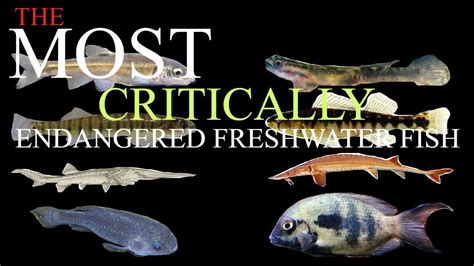
Critically endangered Devils Hole pupfish, once on the brink of extinction, are now exhibiting a surprising and crucial shift in their ecosystem role: preying on the larvae of their primary insect predator, the giant aquatic insect. This remarkable development, observed by researchers, offers a glimmer of hope for the tiny fish’s survival and the delicate balance of its unique habitat in Death Valley National Park.
Devils Hole pupfish (Cyprinodon diabolis), teetering on the edge of extinction, have been observed preying on the larvae of the giant aquatic insect (Belostomatidae), a significant predator of the pupfish. This unexpected behavior could be a turning point in the conservation efforts for the rare fish, found only in Devils Hole, a water-filled cavern in Death Valley National Park.
The discovery, highlighted in a recent report, marks a crucial development in the ongoing battle to save the species, which has faced numerous challenges including habitat degradation and low population numbers. For years, scientists have been working tirelessly to understand the complex dynamics of the Devils Hole ecosystem and to find ways to bolster the pupfish population. The shift in the pupfish’s diet offers a new perspective on the species’ adaptability and resilience.
“It’s an incredibly exciting discovery,” stated Dr. Kevin Wilson, a lead researcher involved in the pupfish conservation program. “For the pupfish to be actively preying on the larval stage of its predator shows the dynamic nature of this unique ecosystem and is an encouraging sign for the species’ survival.”
The giant aquatic insect, also known as the Belostomatidae, is a formidable predator in aquatic environments. They are known to feed on a variety of aquatic organisms, including small fish and amphibians. In Devils Hole, these insects pose a significant threat to the already vulnerable pupfish population, particularly the young larvae.
The pupfish’s shift towards preying on the insect larvae was observed during routine monitoring and research activities within Devils Hole. Researchers noticed a change in the behavior of the pupfish, with individuals actively targeting and consuming the larvae of the giant aquatic insects. This observation was subsequently confirmed through detailed analysis of the pupfish’s gut content and behavioral studies.
The findings suggest that the pupfish are not merely opportunistic feeders, but rather, have adapted to actively seek out and prey on the insect larvae. This behavior could be driven by several factors, including a decrease in the availability of other food sources, an increase in the population of the giant aquatic insects, or a natural adaptive response by the pupfish to control the population of their predators.
The discovery has prompted further investigation into the dietary habits of the pupfish and the ecological factors that may be influencing this behavior. Scientists are now focusing on understanding the long-term implications of this shift in diet for the pupfish population and the overall health of the Devils Hole ecosystem.
Devils Hole, a detached unit of Death Valley National Park, is a unique and fragile ecosystem. The water-filled cavern is home to the entire wild population of the Devils Hole pupfish, making it one of the rarest fish species in the world. The pupfish have adapted to the harsh conditions of Devils Hole, including high water temperatures and low oxygen levels.
The pupfish’s survival is intricately linked to the delicate balance of its environment. The ecosystem is supported by a complex web of interactions between various organisms, including algae, invertebrates, and the pupfish themselves. Changes in any part of this web can have cascading effects on the entire ecosystem.
Over the years, the Devils Hole pupfish population has fluctuated significantly, reaching alarmingly low levels on several occasions. Factors such as groundwater pumping, habitat degradation, and invasive species have all contributed to the decline of the pupfish population.
In response to these threats, a comprehensive conservation program has been implemented to protect the pupfish and its habitat. This program involves a collaborative effort between the National Park Service, the U.S. Fish and Wildlife Service, and various research institutions. The program includes measures to monitor the pupfish population, manage the water resources in the area, and control invasive species.
The recent discovery of the pupfish preying on its predator’s larvae represents a significant milestone in the conservation efforts for the species. It suggests that the pupfish may be more adaptable and resilient than previously thought. However, scientists caution that much work remains to be done to ensure the long-term survival of the species.
The conservation team is now exploring ways to further support the pupfish’s natural predation behavior. This includes creating conditions that favor the pupfish’s ability to hunt the insect larvae and minimizing any potential disturbances to the ecosystem. They also plan to continue monitoring the pupfish population and its diet to assess the effectiveness of these conservation measures.
The discovery of this new behavior highlights the importance of continued research and monitoring of the Devils Hole ecosystem. By gaining a better understanding of the complex interactions between the various organisms in the ecosystem, scientists can develop more effective strategies to protect the pupfish and its habitat.
The Devils Hole pupfish’s survival is not only a matter of ecological importance but also a symbol of the broader challenges facing biodiversity conservation in a rapidly changing world. The pupfish serves as a reminder that even the smallest and most vulnerable species can play a crucial role in their ecosystems and that their preservation is essential for maintaining the health of our planet.
The ongoing efforts to save the Devils Hole pupfish are a testament to the dedication and commitment of the many individuals and organizations involved in conservation. The recent discovery of the pupfish preying on its predator’s larvae offers a beacon of hope for the species and a reminder that even in the face of seemingly insurmountable challenges, remarkable recoveries are possible.
The research team has expressed optimism about the future of the pupfish, emphasizing the importance of continued collaboration and adaptive management strategies. They believe that by working together and remaining vigilant, it is possible to ensure the survival of this unique and iconic species for generations to come. “This is a significant step forward,” added Dr. Wilson. “But we must remain committed to our conservation efforts to ensure the long-term viability of the Devils Hole pupfish.”
The unexpected shift in the pupfish’s predatory behavior underscores the complexity of ecological systems and the potential for species to adapt in surprising ways. As conservation efforts continue, the focus remains on understanding these dynamics and fostering conditions that allow the pupfish to thrive in its extraordinary desert home.
Further Details and Context:
The Devils Hole pupfish is one of the most isolated and genetically unique fish species on Earth. Its entire population lives within a single, geothermal-heated pool within a limestone cave in Devils Hole, a detached unit of Death Valley National Park in Nevada. The pool is approximately 10 feet wide, 70 feet long, and over 500 feet deep, though the pupfish primarily inhabit the shallow shelf near the surface where sunlight penetrates.
The pupfish face extreme conditions, including water temperatures that average around 93 degrees Fahrenheit (34 degrees Celsius) and low dissolved oxygen levels. These conditions have shaped the pupfish’s unique physiology and behavior. They are incredibly small, typically reaching only about an inch in length, and have a short lifespan, usually less than a year.
The population of Devils Hole pupfish has fluctuated dramatically over the years. In the 1970s, the population was estimated to be around 300 individuals. However, in the 1990s and early 2000s, the population declined sharply, reaching a low of just 35 individuals in 2013. This decline was attributed to a combination of factors, including changes in the groundwater levels, disruptions to the pupfish’s food web, and the presence of invasive species.
The critically endangered status of the Devils Hole pupfish has spurred intensive conservation efforts. These efforts include monitoring the pupfish population, managing the water resources in the area, and controlling invasive species. Scientists have also established a refuge population of Devils Hole pupfish at the Ash Meadows Fish Conservation Facility, where they are studying the fish’s biology and developing techniques for increasing their numbers.
The discovery of the pupfish preying on the giant aquatic insect larvae is particularly significant because it suggests that the pupfish may be able to adapt to changes in its environment. The giant aquatic insect, a type of water bug, is a relatively recent arrival to the Devils Hole ecosystem. It is believed to have been introduced to the area accidentally, and it quickly became a major predator of the pupfish, especially the young larvae.
The pupfish’s ability to prey on the insect larvae suggests that it is learning to adapt to the presence of this new predator. This adaptation could be crucial for the pupfish’s long-term survival, as it could help to control the population of the giant aquatic insect and reduce the pressure on the pupfish population.
However, scientists caution that the pupfish’s predation on the insect larvae is not a guaranteed solution to the challenges facing the species. The pupfish population is still very small and vulnerable, and it is still subject to a variety of threats, including changes in the groundwater levels, disruptions to the food web, and the presence of invasive species.
The conservation of the Devils Hole pupfish requires a comprehensive and adaptive approach. This includes continued monitoring of the pupfish population and its habitat, as well as ongoing research to understand the factors that are affecting the pupfish’s survival. It also requires a commitment to managing the water resources in the area in a way that protects the pupfish’s habitat.
The Devils Hole pupfish is a unique and valuable species that is worth saving. Its survival is not only important for ecological reasons, but also for ethical and aesthetic reasons. The pupfish is a symbol of the resilience of life in the face of adversity, and its conservation is a testament to the power of human effort to protect the natural world.
Efforts and Future Directions
Conservation efforts for the Devils Hole pupfish are multifaceted and involve several key strategies:
-
Habitat Monitoring and Management: Continuous monitoring of water temperature, oxygen levels, and other water quality parameters within Devils Hole is essential. Management strategies are implemented to maintain optimal habitat conditions, including controlling algae growth and preventing debris from accumulating on the shallow shelf.
-
Groundwater Management: The pupfish’s survival is directly tied to the aquifer that feeds Devils Hole. Protecting and managing groundwater resources in the surrounding area is critical to ensuring a stable water level in Devils Hole. This involves regulating groundwater pumping and implementing water conservation measures.
-
Refuge Population: A refuge population of Devils Hole pupfish is maintained at the Ash Meadows Fish Conservation Facility. This provides a safeguard against extinction in the wild and allows for research into pupfish biology and reproduction. Scientists are working to refine techniques for breeding pupfish in captivity and potentially augmenting the wild population.
-
Invasive Species Control: Efforts are ongoing to prevent the introduction and establishment of invasive species in Devils Hole. This includes monitoring for invasive species and implementing control measures if any are detected.
-
Research and Monitoring: Ongoing research is crucial to understanding the complex dynamics of the Devils Hole ecosystem and to developing effective conservation strategies. This includes studying the pupfish’s diet, behavior, and genetics, as well as monitoring the populations of other species in the ecosystem.
-
Public Education and Outreach: Raising public awareness about the Devils Hole pupfish and its unique habitat is essential for garnering support for conservation efforts. This includes providing educational materials, conducting outreach events, and engaging with local communities.
The future of the Devils Hole pupfish hinges on the continued success of these conservation efforts. By working together and remaining vigilant, it is possible to ensure the survival of this remarkable species for generations to come.
Expanded Analysis and Broader Implications
The Devils Hole pupfish story is not just about one tiny fish; it’s a microcosm of the broader challenges facing biodiversity conservation in the 21st century. The pupfish’s precarious existence highlights the vulnerability of species to habitat loss, climate change, and other human-induced threats.
The pupfish’s ability to adapt and prey on its predator offers a glimmer of hope in the face of these challenges. It suggests that species can be more resilient than previously thought and that even the most endangered species can find ways to survive. However, it also underscores the importance of protecting and restoring natural ecosystems to give species the best chance of adapting to changing conditions.
The Devils Hole pupfish story also highlights the importance of collaboration in conservation. The pupfish’s survival depends on the coordinated efforts of multiple agencies, organizations, and individuals. This collaboration is essential for addressing the complex challenges facing biodiversity conservation.
The Ethical Dimension
The conservation of the Devils Hole pupfish also raises ethical questions about our responsibility to protect endangered species. Some argue that humans have a moral obligation to protect all species, regardless of their economic value or ecological role. Others argue that we should prioritize the conservation of species that are essential for human well-being or that have intrinsic value.
The Devils Hole pupfish may not be essential for human well-being, but it is a unique and irreplaceable part of the natural world. Its extinction would be a loss for all of humanity. By working to conserve the pupfish, we are not only protecting a species, but also affirming our commitment to preserving the natural world for future generations.
The ongoing efforts to save the Devils Hole pupfish are a testament to the power of human effort to protect the natural world. While the challenges are significant, the recent discovery of the pupfish preying on its predator’s larvae offers a beacon of hope for the species and a reminder that even in the face of seemingly insurmountable challenges, remarkable recoveries are possible. The pupfish, a symbol of resilience, continues to inspire conservationists and researchers alike in their shared goal of securing its future in the unique and fragile ecosystem of Devils Hole.
Frequently Asked Questions (FAQ)
-
What is the Devils Hole pupfish?
The Devils Hole pupfish (Cyprinodon diabolis) is a critically endangered species of pupfish found only in Devils Hole, a water-filled cavern in Death Valley National Park, Nevada. It is one of the rarest fish species in the world, adapted to survive in extremely harsh conditions, including high water temperatures and low oxygen levels.
-
Why is the Devils Hole pupfish endangered?
The Devils Hole pupfish is endangered due to a combination of factors, including habitat degradation, groundwater depletion, and the introduction of invasive species. The limited size and unique nature of its habitat make it particularly vulnerable to environmental changes.
-
What is the significance of the pupfish preying on the giant aquatic insect larvae?
The discovery of the pupfish preying on the larvae of the giant aquatic insect (Belostomatidae), its primary predator, is significant because it suggests that the pupfish is adapting to its environment and finding new ways to survive. This behavior could help control the population of the insect predator and improve the pupfish’s chances of survival.
-
What conservation efforts are in place to protect the Devils Hole pupfish?
Conservation efforts include:
- Habitat monitoring and management to maintain optimal water conditions.
- Groundwater management to ensure a stable water level in Devils Hole.
- Maintaining a refuge population at the Ash Meadows Fish Conservation Facility.
- Invasive species control to prevent further threats to the ecosystem.
- Ongoing research and monitoring to understand the pupfish’s biology and the dynamics of the ecosystem.
- Public education and outreach to raise awareness and support for conservation.
-
What can I do to help protect the Devils Hole pupfish?
You can help protect the Devils Hole pupfish by:
- Supporting conservation organizations that work to protect endangered species and their habitats.
- Practicing water conservation in your daily life to reduce the demand on groundwater resources.
- Avoiding the introduction of invasive species into aquatic ecosystems.
- Educating others about the importance of biodiversity and conservation.
- Staying informed about the latest research and conservation efforts related to the Devils Hole pupfish.
- Respecting the boundaries and regulations set forth by the National Park Service when visiting Death Valley National Park and other protected areas.
Continued Research and Adaptive Strategies
The discovery of the pupfish’s predatory behavior on the giant aquatic insect larvae underscores the importance of continued research and adaptive management strategies. The ecosystem dynamics within Devils Hole are complex and ever-changing, requiring a flexible and responsive approach to conservation.
Researchers are currently focusing on several key areas:
-
Dietary Analysis: A more detailed analysis of the pupfish’s diet is underway to determine the extent to which it relies on the giant aquatic insect larvae as a food source. This will help to understand the ecological significance of this predatory behavior.
-
Behavioral Studies: Scientists are conducting behavioral studies to observe how the pupfish hunt and capture the insect larvae. This will provide insights into the pupfish’s foraging strategies and the factors that influence its predatory behavior.
-
Population Dynamics: Ongoing monitoring of the pupfish and insect populations is crucial for assessing the impact of the pupfish’s predation on the insect population and the overall health of the ecosystem.
-
Genetic Studies: Genetic studies are being conducted to assess the genetic diversity of the pupfish population and to identify any genetic adaptations that may have contributed to its ability to prey on the insect larvae.
Based on the findings of these research efforts, conservation strategies will be adapted to further support the pupfish’s natural predatory behavior and to promote the overall health of the Devils Hole ecosystem. This may involve creating conditions that favor the pupfish’s ability to hunt the insect larvae, such as providing suitable habitat or managing the water flow within Devils Hole.
The Human Connection and the Future of Conservation
The Devils Hole pupfish story is a powerful reminder of the interconnectedness of humans and the natural world. The pupfish’s survival depends on our ability to understand and protect its unique habitat, and our actions have a direct impact on its fate.
The conservation of the Devils Hole pupfish is not just about saving a single species; it’s about preserving a unique part of our natural heritage and ensuring that future generations have the opportunity to experience the wonders of the natural world. It is about upholding our ethical responsibility to protect biodiversity and maintain the health of our planet.
The future of conservation depends on our ability to learn from stories like that of the Devils Hole pupfish. We must embrace a collaborative and adaptive approach to conservation, and we must be willing to invest the time and resources necessary to protect endangered species and their habitats. By working together, we can ensure that the Devils Hole pupfish and other threatened species continue to thrive for generations to come.









